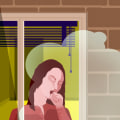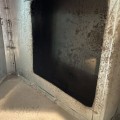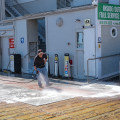Exposure to construction dust is a common concern for workers and homeowners involved in renovations, demolitions, or new builds. The tiny particles generated from cutting, grinding, and sanding materials like concrete, wood, and drywall can linger in the air and be easily inhaled. This dust may contain silica, asbestos, or other hazardous materials that can irritate the respiratory system and, over time, lead to chronic lung conditions. Short-term exposure can cause coughing, throat irritation, and difficulty breathing, while long-term exposure increases the risk of developing serious conditions such as chronic bronchitis, silicosis, or even lung cancer. Removing construction dust from the lungs is crucial to preventing these health complications.
How the Body Naturally Expels Dust
The respiratory system has built-in mechanisms to help clear out inhaled dust. Tiny hair-like structures called cilia line the airways and work to move mucus, which traps dust particles, upward toward the throat, where it can be coughed out or swallowed. Additionally, macrophages in the lungs help break down and remove harmful particles. While the body is capable of expelling some inhaled dust naturally, excessive exposure can overwhelm these defenses, making it necessary to take additional steps to assist the process.
Hydration and Steam Therapy for Lung Cleansing
Drinking plenty of water is one of the most effective ways to help the lungs clear out construction dust. Staying hydrated thins the mucus, making it easier for the cilia to move dust particles out of the respiratory system. Steam therapy is another effective method, as inhaling warm, moist air can loosen mucus buildup and help clear out trapped dust. Taking a hot shower, using a humidifier, or inhaling steam from a bowl of hot water with essential oils such as eucalyptus can provide relief and support lung cleansing.
Controlled Breathing Techniques and Exercise
Engaging in deep breathing exercises can help expand the lungs and promote better airflow, aiding in the removal of trapped dust. Techniques such as pursed-lip breathing and diaphragmatic breathing can improve lung function and encourage the expulsion of irritants. Additionally, physical activity, especially cardiovascular exercise like walking or jogging, increases respiration rates and promotes the natural clearing of the lungs. When breathing deeply during exercise, trapped particles can move more efficiently through the respiratory system and be expelled.
The Role of Diet in Lung Health
Certain foods can support lung health and help the body eliminate toxins. Antioxidant-rich foods such as berries, leafy greens, and nuts help combat inflammation caused by dust exposure. Omega-3 fatty acids found in fish and flaxseeds have anti-inflammatory properties that may protect lung tissues. Foods high in vitamin C, like citrus fruits and bell peppers, can boost the immune system and promote faster recovery from irritation caused by dust inhalation.
Seeking Medical Attention for Severe Exposure
While mild dust inhalation can often be managed at home with hydration, steam therapy, and breathing exercises, severe symptoms such as persistent coughing, shortness of breath, or chest pain should not be ignored. If symptoms persist or worsen, consulting a healthcare professional is essential. In cases of prolonged exposure to hazardous materials like silica or asbestos, medical evaluation is necessary to assess potential lung damage. Doctors may recommend pulmonary function tests, chest X-rays, or specialized treatments to address lung irritation and prevent complications.
Preventing Future Exposure to Construction Dust
Preventing further inhalation of construction dust is just as important as removing it from the lungs. Wearing a properly fitted N95 mask or respirator during construction work can significantly reduce exposure. Using water-based methods to cut or grind materials can minimize airborne dust, while proper ventilation in workspaces can help disperse harmful particles. Regularly cleaning work areas, using air purifiers, and sealing off affected sections of a home can also prevent dust from spreading. Addressing structural issues that contribute to dust accumulation, such as basement cracks, can further reduce exposure by limiting the entry of dust and debris from construction work. Taking these precautions can help protect lung health and reduce the risk of future respiratory problems.



